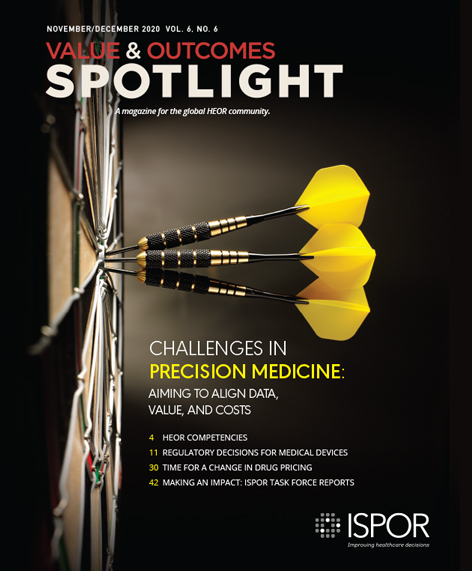Looking at Reluctant Americans and Coronavirus-Related Restrictions
Section Editors: Soraya Azmi, MBBS, MPH, Beigene, USA; Agnes Benedict, MSc, MA, Evidera, Budapest, Hungary
Willingness to Accept Trade-Offs Among COVID-19 Cases: Social Distancing Restrictions and Economic Impact
Shelby Reed, PhD, Juan Marcos Gonzalez, PhD, F. Reed Johnson, PhD
Value Health. 2020; 23(11):1438–1443.
Implications of a study appearing in the November 2020 issue of Value in Health go beyond health economics and outcomes research. Many nations have struggled with optimal decision making regarding the best balance between social distancing measures and the impact of those measures on the economy. There are polarizing debates at the government level but also at the local community level in all countries. There are very strong preferences one way or another in some groups of society. At the same time, there is a lack of understanding of the preferences of the broader population regarding the trade-offs, and how many people truly prefer one over the other, and how many would be willing to trade off.
The authors set out to quantify the trade-off and to identify groups of people with distinct preferences for public health benefits versus alleviating/avoiding economic hardship. A discrete choice experiment was designed and conducted on a representative sample of the US population to elicit preferences weighing social distancing restrictions against economic impact.
A set of 5953 responders (a representative sample of the US population) completed a survey in May 2020. The survey described COVID-19 risk in terms of overall infection rate (2% to 20%) for the population; the duration of the restrictions on nonessential business (hairdressers, fitness clubs, retail stores) from 0 to 5 months; the economic impact in terms of the percentage of households that would fall below the poverty threshold and the duration of the economic impact, measured in terms of number of years to recovery. Preferences were elicited by asking participants to rank the importance of lifting 6 types of restrictions (eg, schools, restaurants, churches, museums).
Results of the study were presented in terms of ranking of factors in the overall set of responders and showed that nonessential business was thought to be the most important (somewhat surprisingly!), keeping schools open was the second most important, followed by dine-in restaurants; and bars/museums.
Then, a latent-class analysis was used to segment the participants into different distinct categories. Four groups, labeled by the authors (with the percentage of the US sample in the parentheses) as the risk minimizers (36%), the waiters (26%), the recovery supporters (25%), and the openers (13%) were identified and described. The “risk-minimizers” focused mostly on reducing COVID risk and overall death burden; the second group preferred to wait with opening of nonessential businesses, independent of COVID-risk, but cared about rising poverty levels. Group 3, the “recovery supporters” focused on economic recovery as more important than reducing overall COVID risk. Finally, the last group had a very strong preference for opening. The authors investigated the associations of the socioeconomic characteristics of participants to group membership and both expected and unexpected associations. Having a political affiliation made one more likely to be a risk minimizer, relative to being politically “independent.” Living on a low income means that these people care less about economic recovery; as the authors say, “it would hold little promise for them.”
The authors assessed willingness to accept social distancing measures in the context of overall COVID risk, longer economic downturns, and more families falling below the poverty line, and go on to provide a more granular picture overall. The study’s major limitation is that the scenarios were hypothetical and preferences were stated, rather than revealed.
The results of the study may not be easily generalizable; also it seems that in the second wave of the pandemic, some circumstances already changed: people have quarantine fatigue and preferences about COVID restrictions could have changed given that one has to look at a longer time horizon than the 5 months tested in the study. However, the study adds valuable insight and provides a more nuanced picture about the factors that people consider and place value on. Some of these implications will have lessons for decision makers and potentially for business owners as well, not just in the United States but in many other countries.
